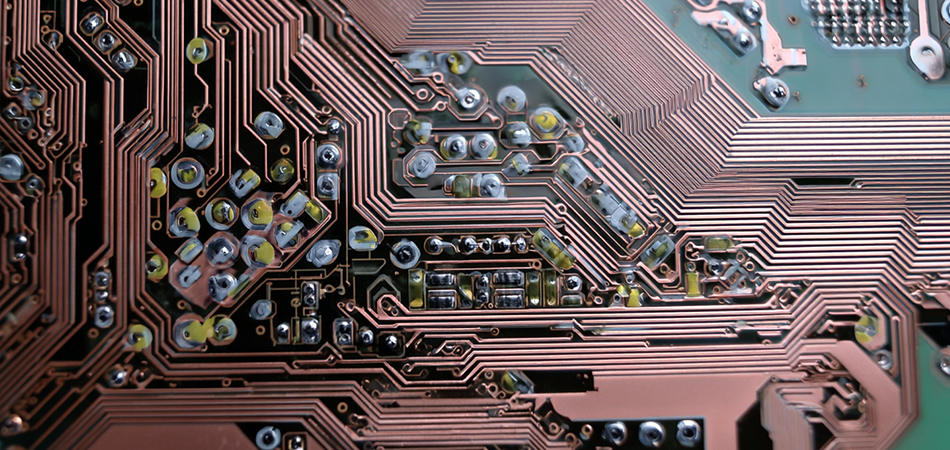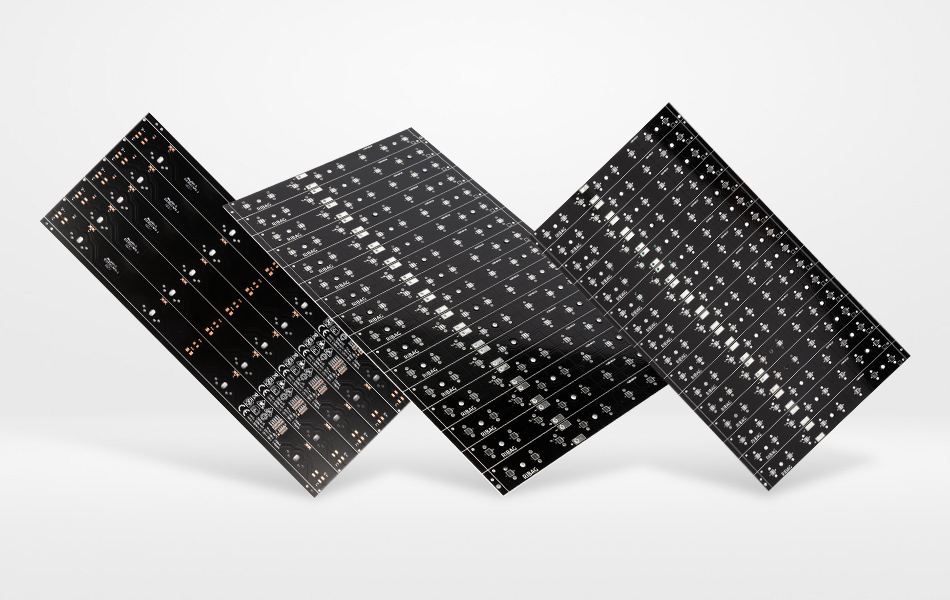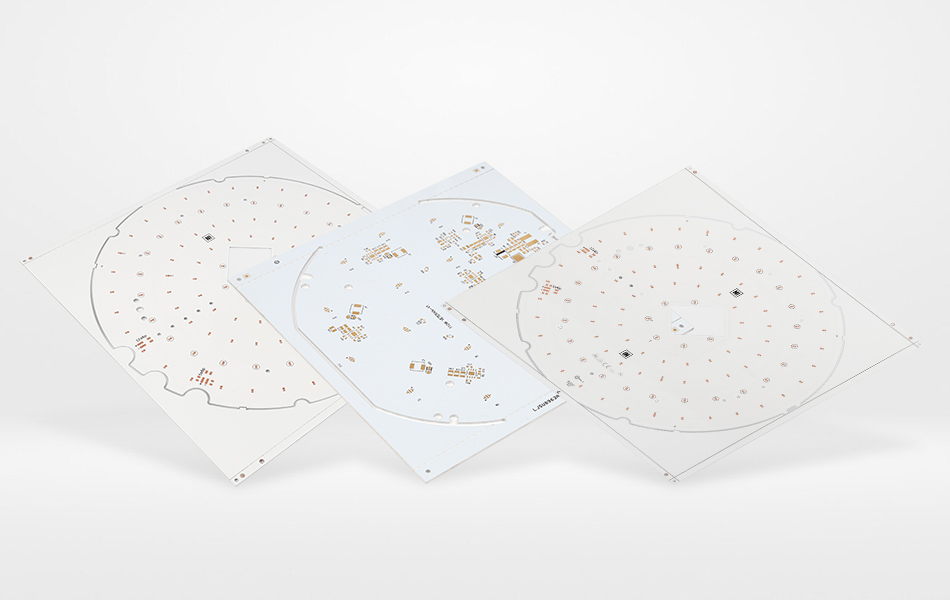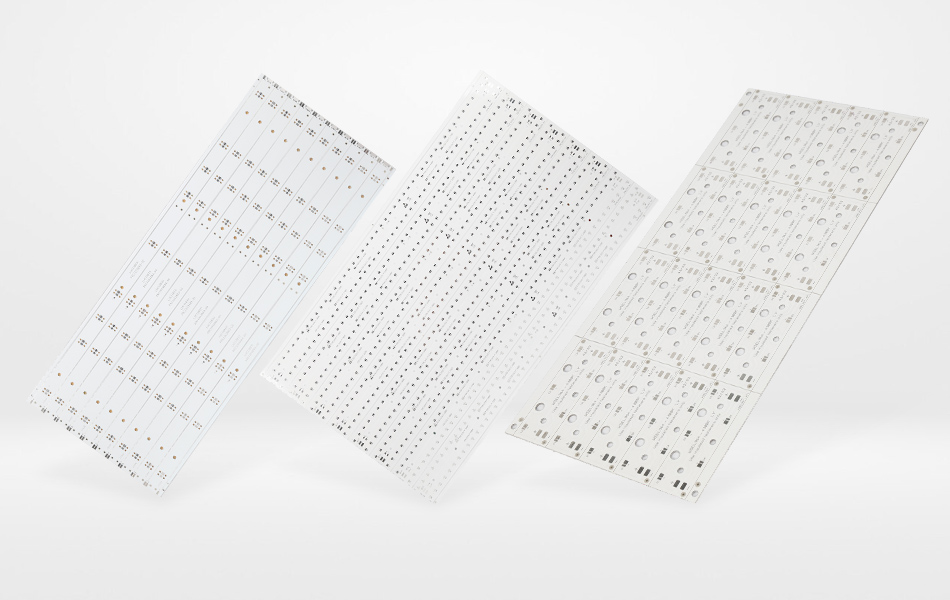-
- PCB TYPE
- PRINTED CIRCUIT BOARD PROTOTYPE ALUMINUM PRINTED CIRCUIT BOARD R&F PCB FPC HIGH FREQUENCY PCB HIGH-TG PCB HEAVY COPPER PCB HDI PCB PCB FOR LIGHTING METAL CORE PCB
time:Jun 27. 2025, 08:28:01
In the dynamic landscape of modern electronics, Printed Circuit Boards (PCBs) serve as the fundamental backbone, enabling the seamless interconnection and operation of various electronic components. Among the diverse range of PCB technologies available, Aluminum Printed Circuit Boards (Aluminum PCBs) have emerged as a revolutionary solution, offering a unique blend of properties that cater to the evolving demands of high - performance electronic applications. This article delves deep into the world of aluminum PCBs, exploring their structure, manufacturing processes, advantages, limitations, and a wide array of applications across different industries.
Structure of Aluminum PCBs
Aluminum PCBs typically feature a three - layer construction, each layer playing a crucial role in determining the board's overall performance.
Circuit Layer (Copper Foil)
The circuit layer, usually made of copper foil, is responsible for conducting electrical signals. It is patterned through an etching process to form the intricate circuitry that connects different components on the board. Copper is chosen for its excellent electrical conductivity, allowing for efficient transmission of electrical current with minimal resistance. This layer is comparable to the circuit layers in traditional PCBs but may have specific thickness requirements depending on the application's current - carrying needs.
Insulation Layer
The insulation layer is a key differentiator in aluminum PCBs. It is designed to electrically isolate the copper circuit layer from the aluminum base while also facilitating heat transfer. Composed of specialized thermally - conductive insulating materials, this layer strikes a balance between electrical insulation and thermal conductivity. The materials used often incorporate ceramic - filled polymers or other advanced composites. These materials not only prevent electrical short - circuits but also ensure that heat generated by the components on the copper layer can be effectively transferred to the aluminum base for dissipation.
Metal Base Layer (Aluminum)
The aluminum base layer forms the foundation of the aluminum PCB. Aluminum is selected for its high thermal conductivity, which makes it an ideal material for efficiently dissipating heat away from the components. Additionally, aluminum provides mechanical strength to the board, ensuring its durability and resistance to physical stress during handling and operation. The aluminum base can be either a solid aluminum sheet or an aluminum - alloyed material, depending on the specific requirements of the application.

Manufacturing Process of Aluminum PCBs
The manufacturing of aluminum PCBs involves a series of precise and carefully orchestrated steps to ensure the final product meets the required specifications.
Material Preparation
High - quality aluminum sheets and copper foils are sourced. The aluminum sheets are inspected for purity and flatness, while the copper foils are checked for thickness uniformity. The insulating material is also prepared, often in the form of pre - impregnated sheets or liquid coatings that can be applied evenly.
Lamination
The copper foil, insulation layer, and aluminum base are laminated together. This process typically involves applying heat and pressure in a controlled environment. The heat activates the adhesive properties of the insulating material, bonding the three layers firmly together. Precise temperature and pressure control are crucial to ensure a strong bond and uniform thickness throughout the board.
Circuit Pattern Transfer
Using techniques such as photolithography or laser - based methods, the desired circuit pattern is transferred onto the copper foil. In photolithography, a light - sensitive resist is applied to the copper foil. A mask with the circuit pattern is then placed over the resist, and ultraviolet light is shone through the mask. The exposed areas of the resist are chemically altered, and subsequent development and etching processes remove the unprotected copper, leaving behind the desired circuit pattern.
Drilling and Component Mounting Holes
Holes are drilled in the aluminum PCB for various purposes, such as mounting components, providing vias for electrical connections between different layers (in the case of multi - layer aluminum PCBs), and allowing for the passage of screws or other mechanical fasteners. Precision drilling equipment is used to ensure the holes are of the correct diameter and are accurately positioned.
Surface Finishing
The surface of the aluminum PCB is finished to enhance its performance and durability. Common surface finishing techniques include soldermask application, which protects the copper circuitry from oxidation and prevents solder bridges during component soldering. A silk - screen layer may also be added to mark component locations, reference designators, and other important information on the board. Additionally, the aluminum surface may be anodized or treated with other protective coatings to improve corrosion resistance.

Advantages of Aluminum PCBs
Aluminum PCBs offer several significant advantages over traditional PCB materials, making them highly desirable in many applications.
Exceptional Thermal Dissipation
One of the most prominent advantages of aluminum PCBs is their superior thermal performance. The high thermal conductivity of aluminum allows heat generated by electronic components to be quickly transferred away from the source. This helps in maintaining lower operating temperatures, which in turn improves the reliability and lifespan of the components. In applications where high - power components are used, such as in power electronics or high - brightness LED lighting, aluminum PCBs can effectively dissipate heat, preventing thermal runaway and ensuring stable operation.
Mechanical Strength and Durability
The aluminum base provides excellent mechanical strength to the PCB. It can withstand physical stress, such as vibration, shock, and bending, better than some traditional PCB materials like fiberglass - reinforced plastics. This makes aluminum PCBs suitable for applications in harsh environments, such as automotive, aerospace, and industrial settings, where the PCB may be subject to rough handling or mechanical stress during operation.
Lightweight Design
Aluminum is a relatively lightweight metal compared to some other materials that could be used for PCB bases, such as copper. This makes aluminum PCBs an attractive option for applications where weight is a critical factor, such as in portable electronic devices or aerospace components. The lightweight nature of aluminum PCBs does not compromise their mechanical integrity or thermal performance, offering a great balance between functionality and weight.
Cost - Effectiveness in Specific Applications
While the initial cost of aluminum PCBs may be higher than some basic PCB materials, in applications where their unique properties are crucial, they can offer long - term cost - effectiveness. For example, in high - power applications, the improved thermal management provided by aluminum PCBs can reduce the need for additional cooling mechanisms, such as heat sinks or fans. This can lead to overall cost savings in terms of component costs, space requirements, and energy consumption.

Limitations of Aluminum PCBs
Despite their many advantages, aluminum PCBs also have some limitations that need to be considered.
Manufacturing Complexity
The manufacturing process of aluminum PCBs is more complex than that of traditional PCBs. The need to precisely control the lamination process to ensure proper bonding between the different layers, as well as the challenges of working with the thermally - conductive insulating material, requires specialized equipment and expertise. This can increase the manufacturing cost and lead time, especially for small - volume production runs.
Limited Electrical Insulation Compared to Some Materials
Although the insulation layer in aluminum PCBs is designed to provide electrical isolation, the electrical insulation properties may not be as high as those of some dedicated insulating materials used in traditional PCBs. In applications where extremely high electrical isolation is required, additional measures may need to be taken, such as using thicker insulation layers or special coatings.
Higher Initial Cost
As mentioned earlier, the initial cost of aluminum PCBs is generally higher than that of standard PCBs. This is due to the cost of the specialized materials used, the more complex manufacturing process, and the need for advanced equipment. However, as technology advances and production volumes increase, the cost of aluminum PCBs is gradually becoming more competitive.

Applications of Aluminum PCBs
The unique combination of properties offered by aluminum PCBs makes them suitable for a wide range of applications across various industries.
Lighting Applications
High - Power LED Lighting
Aluminum PCBs are extensively used in high - power LED lighting applications. LEDs generate a significant amount of heat during operation, and efficient heat dissipation is essential for maintaining their performance and lifespan. Aluminum PCBs can effectively transfer the heat away from the LEDs, allowing for higher power densities and brighter illumination. They are commonly used in streetlights, industrial lighting, and high - end residential lighting fixtures.
Automotive Lighting
In the automotive industry, aluminum PCBs are used in headlights, taillights, and interior lighting systems. The mechanical durability and thermal management capabilities of aluminum PCBs make them suitable for withstanding the harsh conditions inside a vehicle, including vibrations, temperature variations, and exposure to moisture.
Power Electronics
Power Supplies
Aluminum PCBs are employed in power supply units, where they help in dissipating the heat generated by high - power components such as transistors and diodes. This improves the efficiency and reliability of the power supply, ensuring stable operation even under high - load conditions.
Motor Control
In motor control applications, aluminum PCBs are used to drive and control electric motors. The ability of aluminum PCBs to handle high currents and dissipate heat effectively is crucial for the smooth operation of motor control circuits, which often experience significant power fluctuations.
Consumer Electronics
Portable Devices
Some high - performance portable devices, such as gaming laptops and high - end smartphones, may use aluminum PCBs to manage the heat generated by powerful processors and graphics chips. The lightweight and thermally - efficient nature of aluminum PCBs help in maintaining the device's performance while keeping the form factor compact.
Audio Equipment
Aluminum PCBs can be found in audio equipment, such as power amplifiers. They assist in dissipating the heat generated during high - power audio amplification, ensuring clean and distortion - free sound output. The mechanical stability of aluminum PCBs also helps in reducing vibrations that could affect the audio quality.
Industrial and Aerospace Applications
Industrial Control Systems
In industrial control systems, aluminum PCBs are used in various equipment, including programmable logic controllers (PLCs) and industrial automation devices. Their ability to withstand harsh industrial environments, including high temperatures, humidity, and electromagnetic interference, makes them a reliable choice for ensuring the continuous operation of critical industrial processes.
Aerospace Electronics
Aerospace applications demand components that are lightweight, durable, and can operate under extreme conditions. Aluminum PCBs meet these requirements and are used in avionics systems, such as flight control computers, communication systems, and sensor interfaces. The high thermal conductivity of aluminum helps in maintaining the proper functioning of electronic components in the harsh thermal environment of an aircraft.
Medical Devices
In medical devices, such as diagnostic equipment and patient monitoring systems, aluminum PCBs are used to ensure reliable operation. The thermal management capabilities of aluminum PCBs are important for preventing overheating of components, which could affect the accuracy of medical measurements. Additionally, the mechanical strength of aluminum PCBs helps in protecting the sensitive electronic components inside the medical devices from physical damage.

Future Trends in Aluminum PCB Technology
Advancements in Material Science
Ongoing research in material science is focused on developing new insulating materials with even better thermal and electrical properties for use in aluminum PCBs. These materials aim to further improve the heat dissipation capabilities while maintaining or enhancing the electrical insulation performance. Additionally, efforts are being made to develop more cost - effective aluminum alloys with improved mechanical properties.
Miniaturization and Higher Density Integration
As the demand for smaller and more powerful electronic devices continues to grow, aluminum PCBs are expected to play a crucial role in enabling miniaturization and higher density integration. Manufacturers are working on techniques to reduce the thickness of the layers in aluminum PCBs while maintaining their performance, allowing for more components to be packed into a smaller space.
Integration with Emerging Technologies
Aluminum PCBs are likely to be integrated with emerging technologies such as 5G communication, artificial intelligence (AI) accelerators, and Internet of Things (IoT) devices. These technologies often require high - performance PCBs with excellent thermal management capabilities, and aluminum PCBs are well - positioned to meet these requirements.
Sustainable Manufacturing Practices
There is an increasing emphasis on sustainable manufacturing in the electronics industry. Manufacturers of aluminum PCBs are exploring ways to reduce the environmental impact of the manufacturing process, such as using recycled materials, reducing energy consumption, and minimizing waste. This trend is expected to continue as environmental regulations become more stringent.
Conclusion
Aluminum Printed Circuit Boards have established themselves as a vital technology in the modern electronics industry. Their unique combination of thermal, mechanical, and electrical properties makes them suitable for a wide range of applications, from lighting and power electronics to consumer electronics, industrial, aerospace, and medical devices. While they have some limitations, ongoing research and development efforts are focused on overcoming these challenges and further improving their performance. As technology continues to advance, aluminum PCBs are likely to play an even more significant role in enabling the development of smaller, more powerful, and more reliable electronic devices, while also contributing to sustainable manufacturing practices in the industry.

Got project ready to assembly? Contact us: info@apollopcb.com



We're not around but we still want to hear from you! Leave us a note:

Leave Message to APOLLOPCB
